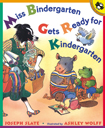On a practical level, Montessori has always believed that the Practical Life Exercises (PLE) were essential to her method as they provide a sane and wholesome range of activities which allow the children to develop control and coordination of movement, awareness of their environment, orderly thought patterns, independent work habits, responsibility etc.. All these can only be attained through spontaneous purposeful work.
And this is what we work on in particular during the first 2 weeks:
- How to wash hands at the sink
- How to use the bathroom
- How to work on a table
- How to work on a rug and walk around it to respect each other’s work
- How to stand in line to wash hands, wash dishes, use the bathroom
- How to walk around a rug?
- How to get the teacher's attention
- How to get the teacher's attention
What else do we focus on? Well, of course, I feel it is very important to teach the children how to tidy their classroom, clean it and organise it. And we nip it in the buds straight away, from the first week at preschool. Everything in our classroom (like in any other Montessori classroom) has a place, and it stays in the same place all year, so that children can find things and put them away more easily. During the first few weeks of school, children explore almost all of the main materials in our classroom while learning rules for using them.
I do a lesson for each center before the kids use the materials, and we go over each center’s rules every day for the first few weeks. The first day of school, I split the class in 2 halves. My assistant takes half of the children to the practical Life Exercises and the Sensorial Centres and I take the other half to the maths and Literacy centers (afterwards, we switch). We show them where everything goes, and we explain safety rules. We take a few things down and put them away asking the children if they remember where they go. Then, each child is given one or more items from that center and the children take turns putting them away. There are times when we have to repeat this. These lessons last as long as needed. There is no set end time for beginning school lesson.
Another great way to introduce the rules is to read from the series of books titled The Best Behavior series (click here to have a look on Amazon.co.uk). There are many books in this series that address behaviors such as sharing, cleaning-up, kicking, hitting, biting, and unkind words. I read one of them every day at the beginning of the year during circle time



Finally, making friends and feeling that we belong is a very important aspect in the children’s normalization process in the Montessori classroom at the beginning of the year especially. So during the first 2-3 weeks of the school year, we also tackle this topic. The first thing is to get the children to know each other’s names as quickly as possible. Especially for the newcomers. I like to read Miss Bindergarten Gets Ready for Kindergarten by Joseph Slate and Ashley Wolff.
In the story, the teacher has 26 students and each student's name begins with a different letter of the alphabet. In turn, each student is an animal that begins with that same letter of the alphabet. (Adam is an alligator, Brenda is a beaver) Their last names rhyme with how they're getting ready for school (Adam Krupp wakes up; Brenda Heath brushes her teeth). We identify students with names that matched the alphabet letters in the book or with names of animals. I write down each child’s name on a colourful card sheet, place a photo of the child beside it as well as a picture of an animal whose name starts with the same letter). By the time we are finished with the book, everyone will have heard everyone else's name, know the first letter of their name and their friends’ too. Don't worry, I will probably write a post on this activity too.
It would be interested if you could share with us what you do in yor classroom or at home at the beginning of the school year.


wow our classrooms are very identical ha ha ha. I too lay down the law and go over the same things as you :)
ReplyDelete